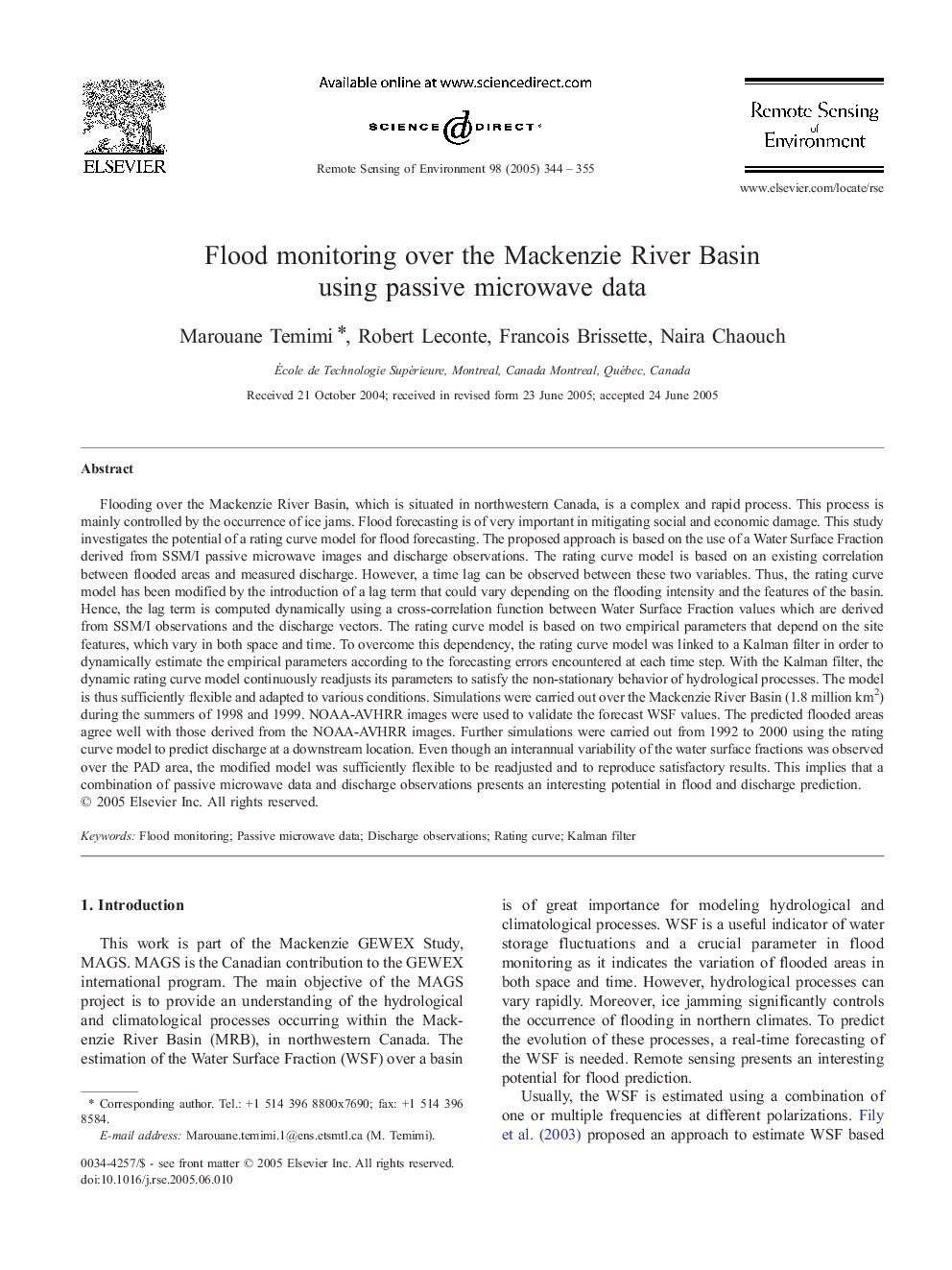| کد مقاله | کد نشریه | سال انتشار | مقاله انگلیسی | نسخه تمام متن |
|---|---|---|---|---|
| 10114092 | 1621382 | 2005 | 12 صفحه PDF | دانلود رایگان |
عنوان انگلیسی مقاله ISI
Flood monitoring over the Mackenzie River Basin using passive microwave data
دانلود مقاله + سفارش ترجمه
دانلود مقاله ISI انگلیسی
رایگان برای ایرانیان
کلمات کلیدی
موضوعات مرتبط
مهندسی و علوم پایه
علوم زمین و سیارات
کامپیوتر در علوم زمین
پیش نمایش صفحه اول مقاله

چکیده انگلیسی
Flooding over the Mackenzie River Basin, which is situated in northwestern Canada, is a complex and rapid process. This process is mainly controlled by the occurrence of ice jams. Flood forecasting is of very important in mitigating social and economic damage. This study investigates the potential of a rating curve model for flood forecasting. The proposed approach is based on the use of a Water Surface Fraction derived from SSM/I passive microwave images and discharge observations. The rating curve model is based on an existing correlation between flooded areas and measured discharge. However, a time lag can be observed between these two variables. Thus, the rating curve model has been modified by the introduction of a lag term that could vary depending on the flooding intensity and the features of the basin. Hence, the lag term is computed dynamically using a cross-correlation function between Water Surface Fraction values which are derived from SSM/I observations and the discharge vectors. The rating curve model is based on two empirical parameters that depend on the site features, which vary in both space and time. To overcome this dependency, the rating curve model was linked to a Kalman filter in order to dynamically estimate the empirical parameters according to the forecasting errors encountered at each time step. With the Kalman filter, the dynamic rating curve model continuously readjusts its parameters to satisfy the non-stationary behavior of hydrological processes. The model is thus sufficiently flexible and adapted to various conditions. Simulations were carried out over the Mackenzie River Basin (1.8 million km2) during the summers of 1998 and 1999. NOAA-AVHRR images were used to validate the forecast WSF values. The predicted flooded areas agree well with those derived from the NOAA-AVHRR images. Further simulations were carried out from 1992 to 2000 using the rating curve model to predict discharge at a downstream location. Even though an interannual variability of the water surface fractions was observed over the PAD area, the modified model was sufficiently flexible to be readjusted and to reproduce satisfactory results. This implies that a combination of passive microwave data and discharge observations presents an interesting potential in flood and discharge prediction.
ناشر
Database: Elsevier - ScienceDirect (ساینس دایرکت)
Journal: Remote Sensing of Environment - Volume 98, Issues 2â3, 15 October 2005, Pages 344-355
Journal: Remote Sensing of Environment - Volume 98, Issues 2â3, 15 October 2005, Pages 344-355
نویسندگان
Marouane Temimi, Robert Leconte, Francois Brissette, Naira Chaouch,